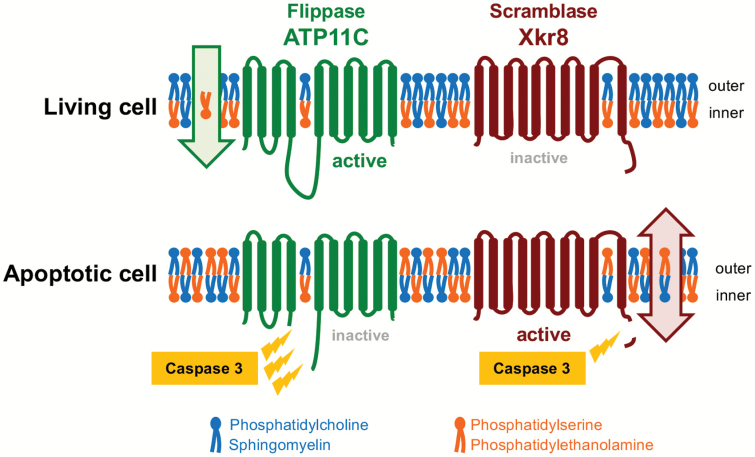Fig. 1.
Flippase- and scramblase-mediated regulation of apoptotic PtdSer exposure. ATP11A and ATP11C are ubiquitously expressed P4-type ATPases that contain 10 transmembrane regions. In living cells, these proteins actively translocate PtdSer from the outer to the inner leaflets, maintaining the asymmetrical distribution of PtdSer. When cells undergo apoptosis, caspase 3 cleaves ATP11A and ATP11C, and irreversibly inactivates them. Simultaneously, caspase 3 cleaves Xkr8 and activates it. Active Xkr8 seems to provide a path for phospholipids to translocate the hydrophobic layers, causing the rapid and irreversible PtdSer exposure in apoptotic cells. Blue, PtdCon and sphingomyelin; red, PtdSer and PtdEtn.

